Make Hungary great again
Today the k&k Monarchy is widely regarded as an Austrian empire. However, a look at a map of the double-monarchy shows that the size of the part belonging to Hungary with 325.000 km2 was bigger than the Austrian part with 300.000 km2. From the gates of Vienna (Hungary included the Neusiedler See, now in Austria not far from Vienna) in the West it reached as far as Kronstadt (now Brasov in Central Romania). In the North it reached as far as the Tatra and Beskide mountains in what is now Slovakia at the border to Poland and included Poprad (see part 6) and Kosice (part 7). In the south it included a part of the Adriatic coast with the port of Fiume (now Rijeka in Croatia). Of the places visited during this series Hungary included Poprad (part 6), Eger (Erlau, part 7), Debrecen (part 8), Cluj (Klausenburg, part 9), Schässburg (Sighisoara, part 10) and Herculesbad (Baile Herculane, part back 4). It included the European capitals of Agram (Zagreb), Pressburg (Bratislava) and of course Budapest. For some people this is a legitimate reason to make Hungary great again.
Austrian lands administered from Vienna (deep pink) and Hungarian lands administered from Budapest (green) under the 1867 agreement. After 1878 Bosnia-Herzegovina (yellow) was jointly administered (wikimedia common).
From the station of Baile Herculane I will take the train to cross this vast territory. For the international train from Bucuresti to Budapest leaving in Baile Herculane at 12.04 am the holder of an interail pass needs a reservation. Already when I have a fast dip into the warm thermal waters of the hotel pool in the morning it is sweating hot. To be sure I take a taxi for the 3.5 km to the station early enough to book the ticket. I also decide to skip further visits in interesting Romanian towns like Resita, Timisoara, or Arad and proceed to Hungary right away. It is far too hot for sightseeing. Considering these temperatures it seems to be the most pleasant to enjoy the countryside from the open window of an old fashioned train.
The monumental station of Baile Herculane has two buildings: there is a magnificent, circular domed waiting hall probably built in those times when rich and noble guest were still visiting the town. And there is the ordinary station building, which is not ugly, but normal and pretty. There is a ticket counter in the latter building. It is closed on Sundays. So there is no way to buy the reservation if not online. I have no idea how to do that with the Romanian or Hungarian railways. So far nobody had ask for the reservations in Romania. In Hungary, where I expect them to ask, i only will travel on the train for a couple of stops. I will take the risk.
Most of the platform is covered with a pergola embraced with vines. There are some benches but most are already occupied although I am 40 minutes early. There is a man who has taken off his shirt in response to the heat and shows his naked and tattooed upper body. Another bench is occupied by an old guy with a shaggy grey beard, woolen cap and a fleece jacket. I find an empty bench and stretch out as much as possible to dry up a bit of the sweat.
There is an announcement, and if I understand it right it is about a delay of 40 minutes. It is too hot to move, even too hot to read. Waiting time under such circumstances is like meditation. I observe a tiny red bug. He is crawling across the floor tiles, descending into the joints, reversing, climbing on the next tile. What is he looking for? I am tempted to pick him up and carry him to a piece of greenery but it is too hot.
Announcement that the station is closed
One by one, stray dogs arrive from the forest on the far side of the tracks, cross the rails and check out the waiting passengers. All of them are bony females with big, sagging and worn out teats. They don’t come close. Obviously they don’t have a lot of expectations. Eventually they all find a shady spot and settle down to take care of the vermin in their fur. What will be their diet today?
For delays shadow is provided for passengers and stray dogs
In the background is the noise of traffic of the main road. A bus stops at the gas station. Would it be faster? More comfortable?
Eventually the train arrives. Three coaches long and next to empty. It is hot inside. The air condition is not working properly. There are little tilt windows but they are locked. People try to get relief from the heat. The women try fanning. One has expected her fate and brought a proper fan, others use sheets of carton or paper. Those who don’t have any tool for fanning constantly pick and pull at their clothes which stick to their sweaty body. A fat guy with overhanging sagging belly has tried to solve the problem by pulling his t-shirt up to above his chest, leaving his paunch free to be appreciated.
Traditional agriculture in Romania
One of the conductors has brought a towel to dry his forehead. He checks the tickets with the towel around his neck. There are two others. Each has a different uniform. One of them, a giant, sticks to the rules and decency in a perfect uniform and wearing his cap. He has to bend down when he passes the doors to not loose it. Sweet drips down his face.
View from the train into a village main street
In the booth next to me is a little old man with a head far too big for his very thin body. On the table in front of him a fashionable panama hat and his glasses. Next to him a beautiful brown leather satchel. He wears gray ironed trousers, a blue short sleeved shirt and light brown leather shoes. On his wrist a golden watch. Now he takes off his shirt. Underneath, a much too wide, sleeveless undershirt hangs around his emaciated body. He pulls off the undershirt, puts it in the satchel, and then tries to get on his shirt again. He cannot find the opening of the second sleeve. I wonder whether I should get up and help him but it is so hot. Eventually he tries it from the other side and succeeds.
Railway companies insist on air-conditioned trains but it should be known by know that it seems impossible from an engineering point of view to design a functioning air condition for a train. It is always more pleasant to have a train with no air condition and windows to open than to travel in a metal tin without openings and malfunctioning air condition. The, from the viewpoint of safety somewhat questionable, opening of the carriage doors practiced in Romania brings only little relief. The conductor excuses the situation with the exceptional heat outside. Eventually he produces a key and opens all the tilt windows. It brings some relief. Victory of common sense over the tyranny of technology.
Traditional platform with level crossings
Fortunately there is the woman from the train bar. Disregarding the heat she balances a tray of snacks, coffee and tepid sodas along the aisles. I give her a tip for the effort. She seems to be surprised. Still I also have to resort to my bottled water which is close to the boiling point.
In the carpathian mountains
The train ride between Baile Herculane and Caransebes is spectacular running along narrow valleys. The train crosses the Carpatian mountain range. Deciduous forests cover the slopes. Small plots are open for traditional agriculture. Hay stacks, flocks of sheep, little villages. A world where productivity and plastic still have to arrive.
The hot train fills in Timisoara. A lot of the new passengers seems to be students traveling to Hungary.
In the station of Timisoara
On August 29th 1526 the 20 year old king Louis II of Hungary (nicknamed Louis the child because he had been crowned when less than 2 years old) died in the Battle of Mohács against the Ottoman Turks under their brilliant Sultan Suleiman the Magnificient. Besides Hungary, Louis’ rule extended also to Bohemia and Croatia. In a somewhat complicated hereditary procedure Archduke Ferdinand of Habsburg became the next king of Bohemia and Hungary. However, the new king ruled somewhat theoretically: due to Süleyman’s victory in the battle most of Ferdinand’s lands in Hungary were now under Turkish rule. Süleyman’s quest went further onto Vienna, however, the siege was not successful and Vienna was saved.
Sunflower field in Hungary
The revenge came 150 years later, in 1687. In what became the second battle of Mohacs the Habsburg Holy Roman Emperor Leopold I and his commander Charles of Lorraine won back Hungary and Transsylvania from the Turks under their Sultan Mehmed IV and his commander Grand Vizier Sari Süleyman Paşa. The defeat was such that the entire Ottoman army disintegrated, the Grand Vizier fled back to Constantinople where he was promptly executed, his troops followed and eventually Sultan Mehmed IV was replaced by Süleyman II. From now on the Habsburgs held hereditary succession in the Hungarian kingdom. In the following years the Habsburg territory was expanded far into the Balkans.
The Hungarian revolution of 1848 made the Habsburg rule over Hungary questionable. A statue of Kossuth, the Hungarian hero of that revolution, still decorates every major Hungarian town. After 18 years of military dictatorship by emperor Franz Josef I (the one of Bad Ischl, part 4) a compromise was found in 1867 by forming the k(aiserlich) & k(önigliche) Doppelmonarchie of Austria and Hungary. Austria and Hungary were now considered two separate states with a common ruler, Franz Josef I himself and his charming wife Sisi. The Austrian state and the Hungarian state each had their own parliament and their own Prime minister. There was a common ministry of foreign affairs and of finances as far as the issue of banknotes, army, navy and diplomatic services was regarded. Interesting enough Hungary also took over a big part of the enormous Austrian state depths.
Countryside station in Hungary
After another stop in Arad the belated train approaches the border between Romania and Hungary. When Patrick Leigh Fermor crossed this border on April 27th 1934 he called it the most-hated border in Europe. He had to take the train since other ways of crossing the border were not allowed. At the border in Curtici, he had to get off and a bored Romanian customs officer put a stamp in his passport, yawning. He did not check his luggage.
The hatred involving that border crossing was the consequence of the treaty of Trianon in 1920. It formally ended the first world war. The consequence was that Hungary lost a big part of its territory. Winners were Romania, Yugoslavia and Czechoslovakia. Hungary became a landlocked state. The land area of 325,411 square kilometres before world war I was reduced to 93,073 square kilometres, a mere 28% of its former self. The population was reduced from 20.9 million to 7.6 million. 31% of Hungarians became minorities in the neighboring states.
Today the Hungarian Romanian border is between member states inside the EU. However, the Romanian border police in the last Romanian station of Curtici take their job seriously to show passengers how frightening border crossings have been. While the engine is changed they control the passports. Mine is scrutinized from all sides, held against the light, but not collected or scanned. At the end of the next to empty carriage a woman with stroller and baby has settled in. One big bag she has disposed of in the luggage rack above the windows while the rest of her luggage is on and between the seats. Two border guards examine her passport and ask her where she comes from and goes to. When she says that she is traveling alone they do not believe her because they have found a guy in the back of the train who has said that he travels with her. She denies. The border guard replies that he does not trust her but finally leaves her alone. The baby has kept silent during the interrogation.
The station of Kiskunfelegyhaza
The Hungarian border police is less meticulous in their border station of Lökösháza. After they have left, the woman opens the bag in the luggage rack and caresses the cat which leaves the bag and settles above her head. There is a second cat inside but it keeps hiding. Eventually a guy who had been walking by several times before the train had approached the border, exchanges some words in an unknown language with the mother and disappears again.
Tracks in Oroshaza
Eventually the conductor comes and moves the whole group into a separate compartment in the next carriage. Both women caress the cat affectionately. The baby, which has lost patience, gets much less attention. The conductor also checks my ticket. She asks for my reservation but doesn’t seem to have a problem that I travel to the next station in Bekescsaba without. As soon as we have crossed the border the speed of the train increases considerably. The reconstruction of the line in Hungary is clearly much more advanced as compared to Romania.
Arrival in Bekescszaba
In Bekescsaba Patrick Leigh Fermor on his parasitic trip to Istanbul had the chance to stay in the country estate of rich Hungarian land owners from Budapest. He played bicycle polo with the family and the staff. During his stay the estate housed Erzherzog Joseph, at the time without official role, but still important enough that they gave Fermor presentable clothes to wear during the reception.
I stay in hotel Brill which is quite a walk in the cindering heat from the station. It is a nice and friendly place with a good restaurant and a pool. Unfortunately I don’t get a chance to use the latter because as soon as I have settled in after my late arrival a heavy thunderstorm breaks loose. I guess it also saves me from being invited to a game of bicycle polo.
In vain I had asked the owner of Brill’s hotel about a castle where Patrick Leigh Fermor could have stayed at the time. The search is made more difficult since in the book only the first name Józsi of the owner is disclosed. However, the excellent website of the city of Bekescsaba and a blog cited below shows that it was Wenckheim castle. There is also another, ruined Szechenyi Wenckheim castle outside town. The first is renovated and can be visited. The owners were known for their hospitality and the renovated castle has a virtual program where you can experience the former castle life including a virtual grip into the bookshelfs of the library.
I presume that the hot water which I drank during the train journey had some negative effect on my digestion. It had been restless ever since I had drunk the unpalatable tap water in Vise and I had tried to keep it under control with infusions of ORS. It also seems to work this night.
The first train will only leave Bekescsaba at 11.47 am so that I have the morning to leave my bag at the hotel and walk around the town. After the thunderstorm it is much cooler but still humid. Most of the town center is composed of modern construction but there are some nice neoclassical or eclectic buildings. Most of the streets are pleasantly shaded by rows of tall trees. The town center is surrounded by neighborhoods of the typical puszta single story houses. When the plaster is broken away it becomes clear that the thick walls are basically made from mud.
Bekescsaba was another example of multi ethnicity during the times of the Austro-Hungarian empire. In 1880 the percentage of Hungarian citizens was 19.8 %, of Slovaks 73.8 %. Today there are 3 % of Slovaks left. Csaba is in fact the Hungarian name for a turkish boy. However, there are no muslims mentioned in the census. A typical Slovak house has been turned into a museum.
Most impressive is the ruin of a grain mill at the far end of town. The Istvan Malom was closed down in 2005 because it was not possible to find customers to buy the 400 tons of flower produced daily. There are spectacular repurposing projects, but the complex burned down in 2019 for unknown reasons. Next to the mill is a train on a plinth to remind of the extensive network of branch lines crisscrossing the puszta and also serving the mill.
Interesting enough many of the branch lines in the Puszta still exist. The fastest way to continue would be to buy a reservation and take an intercity to Budapest and beyond. However, I want to take a connection with a number of those local trains across the plains of southern Hungary. For today this involves changing trains in Oroshaza, Szentes, Kiskunfelegyhaza and Kuelsoehalas to arrive in a town called Baja at 17.46 and stay overnight there.
Leaving Beceszsaba the first train consists of a huge Diesel engine having little effort to move the train of two carriages. The line continues to Szeged, but due to works ends in Orosháza. I think I have the train to myself but a short moment before departure a father comes in with two sons, one quiet and nice and one noisy and restless. They have a whole train to select where to sit. They decide to sit in the booth next to me. I am too lazy to move and stretch my head out of the open window to enjoy the fresh morning air.
The noise of the train chases up hares and deer which jump out of their hiding in the vast grain fields. The storks that poke in the mud of the ditches between the fields, however, remain unimpressed by the passing train. The grain fields alternate with big sun flower fields, for me in particular special since they do not grow (yet) at home in our cold countryside. The sun flowers always seem to turn their heads away from the passing train.
Orosháza is a station giving the impression as if the time has stood still. A huge, well maintained building with an open ticket counter gives access to trains in all directions of the wind rose. There is a beautiful clock, well maintained flower beds and commemorative plaques for those railmen who died in the war. Passengers cross the tracks on level crossings to reach the rail cars waiting for them. The platforms are low and it is quite a climb onto the high trains. However, the guard watching with his flag is always ready to give a helping hand.
Memorial plaque for the opening of the line
Passengers to Szeged have to continue by bus. I want to go to Szentes but I cannot discover a train on the printed schedule. I show the interrail schedule to the guard. He points at a lonely old railcar. Inside the air condition runs full force. There are two other passengers but they soon get off at an intermediate stop. In the Rocky mountains the Rio Grande Southern Railroad had railcars called the Galloping Goose. The nickname would be appropriate here. The train is slow, but bumpy. It takes one and a half hours to cover the 35 km to Szentes. And for the first and only time, on the whole trip, here on a little railcar in the middle of nowhere, the conductrice, after thoroughly checking her reader, asks for a passport as identification for my interrail ticket.
The Galloping goose in Szentes
But the Galloping Goose is on time. I only have 7 minutes to change to the connecting railcar to Kiskunfélegyháza. Szentes is another big railway hub in the middle of the nowhere of the Hungarian Puszta. There is a big workshop with long rows of abandoned railcars.
There are few villages along the line. But even if there is only a stop with the hint of a platform there is a bin equipped with a plastic bag. Train traffic here is a true service to the countryside population. A service which was long abandoned in the rich countries further west.
In Kiskunfélegyháza I change to an electric train to Külsőhalas. It is only as short ride of 39 minutes. In the short time this train covers a similar distance as all the railcars I have taken before together. This is the track connecting Budapest with Serbia. They are busy with a complete rebuild and the line is closed south of Külsőhalas. The connection to the train to Baja is at a platform in the middle of nowhere. The time to change is short, but today all the trains are on time.
The Diesel multiple unit to Baja his seen better times. Whole rows of them I had seen abandoned in the station of Szentes. During acceleration it emits thick black clouds of smoke. But it runs fast. The sixty kilometer distance is covered in an hour and 9 minutes.
In Baja it is the sixth time on this trip that I arrive at the shore of the Danube – after Ingolstadt, Vienna, Ruse, Vise and Turnu Severin. Due to its location on the Danube, Baja was an important transportation hub between railway and river. For a long time the town belonged to the Szobos family. Its most prominent member was Matthias Corvinus (part 9), the ruler who was born in Cluj and celebrated as Hungarian ruler in the 15th century. However, after the Ottomans had left in the 18th century, the population of the town was Bunjevac (Dalmatians), Germans and Serbs. Today 93.5 % are Hungarian and 2.7 % German.
Baja
The old town center is on the high river bank above a side arm of the Danube. There is an enormous town square with a city hall which reflects the former importance of the town. Next to it a beautiful old-fashioned hotel in eclectic style. Even in a small town like Baja you are reminded of the historical implications of the immense extent of the Austrian-Hungarian empire. Baja is the birthplace of the engineer, architect and revolutionary István Türr (1825 – 1908). As a member of the Austro-Hungarian army he was stationed in Italy during the Italian war of unification under Garibaldi. When he saw the atrocities of the war he changed sides in 1849 and fought for the Italian cause. It is absolutely fascinating to read about his long nomadic life of a revolutionary and the town has dedicated a museum to his story.
In Baja I have booked a hotel next to the station. It is located in an old warehouse. In the backyard is a bowling alley and a terrace where dinner is served. I share the place with a group of Dutch “bikers”. They are proud of their achievements. One boasts of riding 140 km/h on a Serbian mountain road and getting a fine for ignoring a stop sign. He regards the 15€ a tip for the cops. His mate complains about his tooth ache. He does not have an insurance covering dental problems. In Romania somebody has given him a bottle of Raki. Gargling with Raki seems to help. Then their telephone rings. It turns out that they have left one of their mates behind in a hotel in Romania. He fell and broke his shoulder. The guy now complains that he is there all alone and nobody to talk to. The next airport is 200 km away but even if he would get there somehow they would not take him on a plane with his injury. Maybe he should take the train?
In the morning I get served an opulent breakfast. It is not a buffet as is usual in all those anonymous hotel chains but they serve a basket of bread, a plate of sausage, cheese and spreads, and I am asked what kinds of eggs I like. Shortly afterwards I get a big plate of three fried eggs and bacon. After I have finished most of the sausage on my plate I even get an entirely new plate. I am full already so I do not even touch it.
Residential streets in Baja
Vitalized as I am by the enormous breakfast I proceed the short distance to the station. There is a ticket counter and it is open. I try to explain that I have an interrail pass and that I want to have a reservation for a train to Ljubljana the next day. And although the lady hardly speaks any English she issues the right ticket for the negligible price of 2 €. The next day nobody will ask for this ticket or reservation.
Station in Baja, train to Külsőhalas
While I stay in Baja I walk past the bus station. The display announces the immediate departure of three busses to Pecs, one to Szeged and one to Budapest. From Baja there is no direct train to either of these towns and getting there takes a long time.
My next intended stop is lake Balaton. This involves a train from Baja to Dombovar (1 h 39’), a connection 5 minutes later to Kaposvar (39’) and then the train from Kaposvar to Keszthely (1 h 47’).
The train leaving Baja is another Galloping Goose. It first crosses the Danube on another enormous bridge. This time I do not fall asleep. Afterwards the train line crosses an area of vast swamps which remind of the American South. Tall trees spread their roots in pools of still black water. For the exploitation of the forest a narrow gauge railway was used. It still exists as a tourist railway.
For the entire rest of trip to lake Balaton the trains cross a pleasant landscape of rolling hills, deciduous forests and small scale agriculture. All trains are on time. In Dombovar, four different trains wait for connecting passengers. Eventually I find the one to Kaposvar. Dombovar also has a big workshop full of engines in all states of maintenance.
Main street Kaposvar
I have more than an hour to kill between trains in Kaposvar. There are no lockers at the station and again it is far too hot to go for a walk. Across the street from the station is Hungary’s biggest theater surrounded by a small park. I walk there with the intention to have a rest. However, when I start looking into the tree-lined streets I get intrigued by all the beautiful buildings in eclectic style. I carry on walking until I reach a pedestrian zone lined with street cafes and I arrive at the historic hall and cathedral.
City hall
There is still plenty of time when I return back to the station and the train to Györ, which I have to take to go to Lake Balaton is announced for track 2. I get a coffee in the friendly station kiosk and walk across the tracks to sit in the shade.
.. and of the steam engine plying the branch lines around Kaposvar before the Galloping Gosse arrived
Only a couple of minutes before the scheduled departure of the train I realize that something must be wrong. It turns out that the train does not leave from track 2, but the departure has changed to track 1. A modern Diesel multiple unit had been waiting there for quite a while. Probably I did not hear and understand the announcement. But I get in just on time.
The train meets Lake Balaton at Fonyöd. Most of the lake shore between there and Keszthely is covered with buildings. For a land-locked country like Hungary a lake of this size is like the seaside elsewhere and is correspondingly popular.
There is a nice beach spa in Keszthely. For an entrance fee of 1500 F (5 €) you can enjoy amenities like a children’s playground, bars, slides but also a nice old fashioned wooden pier with changing rooms and cabins. Entirely unimpressed from the swimmers around them a couple of cormorants dries their wings on a barrier in the water. The lake has a pleasant temperature and after getting wet it is almost too fresh to get dried by the wind. Next to the Spa entrance is the old hotel Balaton. The romantic building is abandoned. Instead they have built a huge new colossus not far from it and a huge ferris wheel slowly turns around to give this flat landscape a third dimension.
I have reserved a room in Gästehaus Möritz. All the doors are open when I arrive and the housekeeper has to wake the owner from his nap. I get a nice room with a balcony. Möritz is the last name of the owner. His ancestors were among those 20000 Germans who were invited to settle here by the local ruler Rudolf in medieval times to protect the Slavic border. He both speaks German and English.
In the morning at breakfast I meet one of the other guests. He came here by car from Ulm in southern Germany. It is only a drive of 6 hours. He had been here several times before and spends his time with excursions into the surrounding country side.
There are more Germans in town. Möritz had recommended a restaurant for dinner. It is close to the Gästehaus and there is a nice garden with soft 60’ies West coast sound background music. Next to me is a German speaking table with a family who seem to be well known here.
The main attraction of Kestzthely is Festetics Palace. The construction of the palace started in 1745 and lasted more than a century. Eventually the Festetics Family had one of the three biggest palaces in Hungary with almost 100 rooms and a magnificent library for their exclusive use. It is the most luxurious examples of those palaces where Patrick Leigh Fermor stayed during his travels. Already since 1974 a part of the palace is open for visitors. However, I came on Monday when most of the musea in the world are closed.
However, the landscape garden surrounding the palace is open daily. A pond is spanned by a white bridge. In the garden are greenhouses for exotic plants and the stables which now house a carriage museum. Chairs and benches allow the visitors to sit down, relax and enjoy the opulence.
Originating from Croatia the Festetics family were big landowners who acquired the noble status of counts. Members of the family served as minister of foreign affairs in Hungary and Prince Tasziló Festetics de Tolna (1850 – 1933) received his title by emperor Franz Josef I himself. In their time they had a similar status as today’s oligarchs like Elon Musk or Bill Gates. It is interesting to look at the names of family and friends of this noble family . Exceptional first names and double last names where the rule. There was a Countess Eugénia Erdõdy de Monyorókerék et Monoszló, a Princess Josefine of Hohenzollern-Hechingen, a Countess Ernestine of Lerchenfeld-Prennberg, Mária Matild Georgina Festetics de Tolna, Ira von Fürstenberg, Countess Marie Franziska von Haugwitz, Prince Karl von Windisch-Grätz, Archduchess Elisabeth Marie of Austria, Prince Erwin zu Hohenlohe-Waldenburg-Schillingsfürst or Baron Oskar Gautsch von Frankenthurn.
In 1949 the property was nationalized. In exchange the communist Hungarian state issued certificates. Therefore there was no restitution of property to the previous owners in Hungary after 1989 like in Germany.
The former stables, now a carriage museum
There had been previous land reforms and the Festetics family probably had lost some of the land which had made them rich. However, for centuries their income had been earned by serfs who had worked on their land. It is understandable that such immense differences in wealth had raised sympathy for communist ideas.
It is the time of the European soccer championship. Hungary had some hope to proceed into the finals and their president did not miss their games. According to the locals he is promoting soccer because the building contracts for the building or rebuilding of the stadia go to family or friends of the president. However, soccer is not the field where Hungary can reach great fame: they did not get beyond the first group stage.
The next day I have to take a train to Janoshaza to change for the international train to Ljubljana for which I have bought a reservation in Baja. It would have been possible to cross Hungary with two international trains by changing in Budapest. The slow route across the countryside took three days and 11 trains but it was much more interesting and instructive.
Sources:
Patrick Lee Fermor, Between the woods and the water



















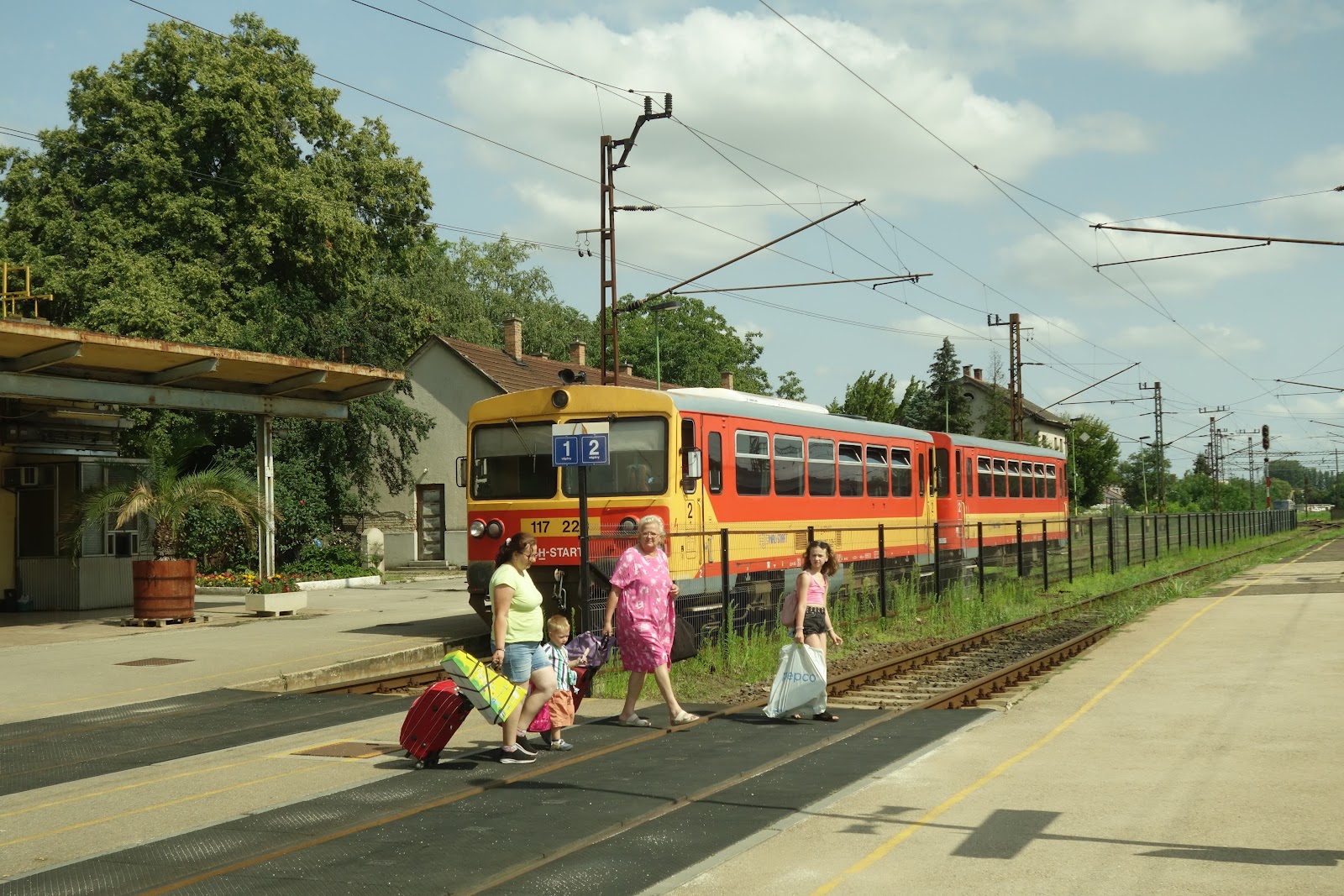



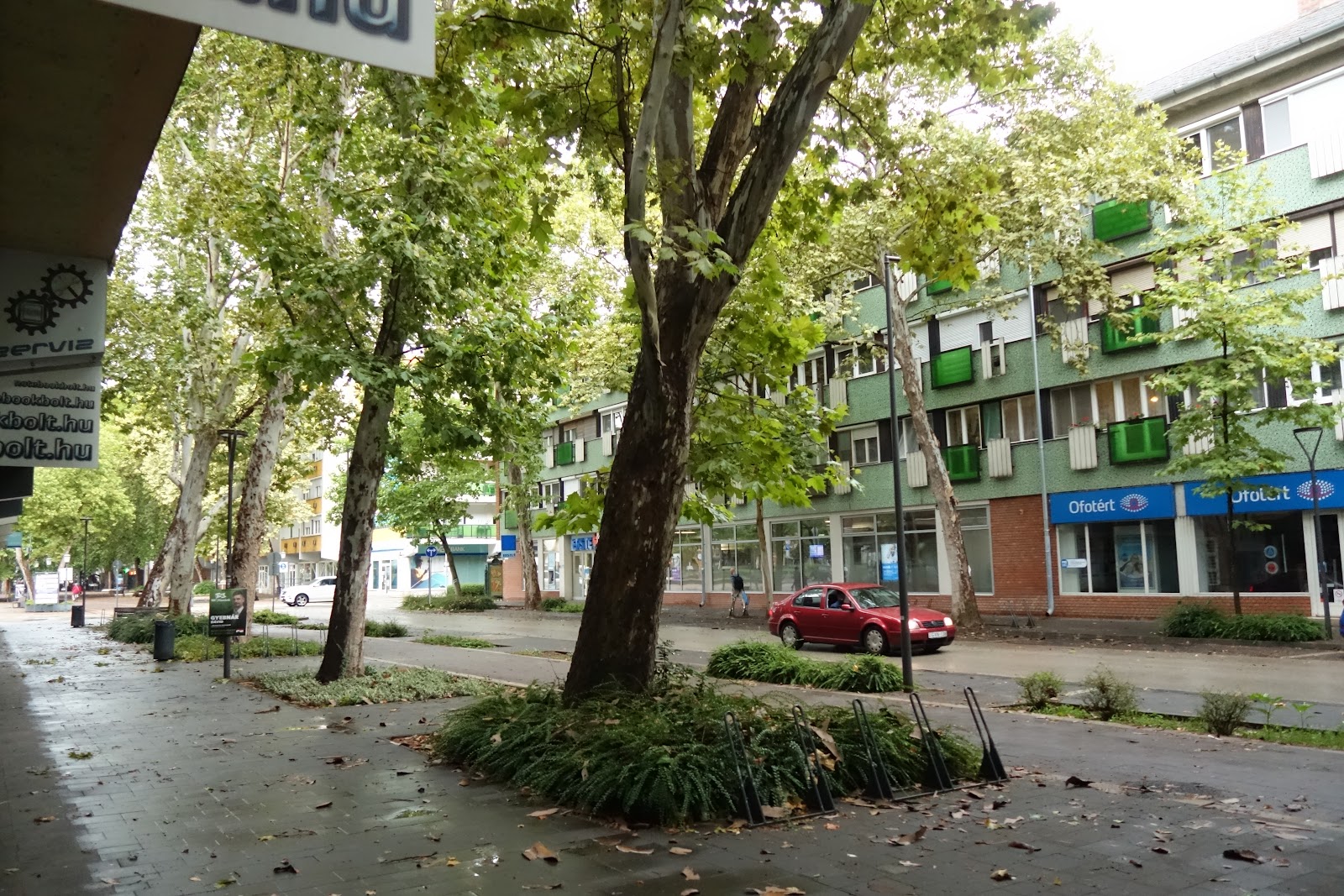







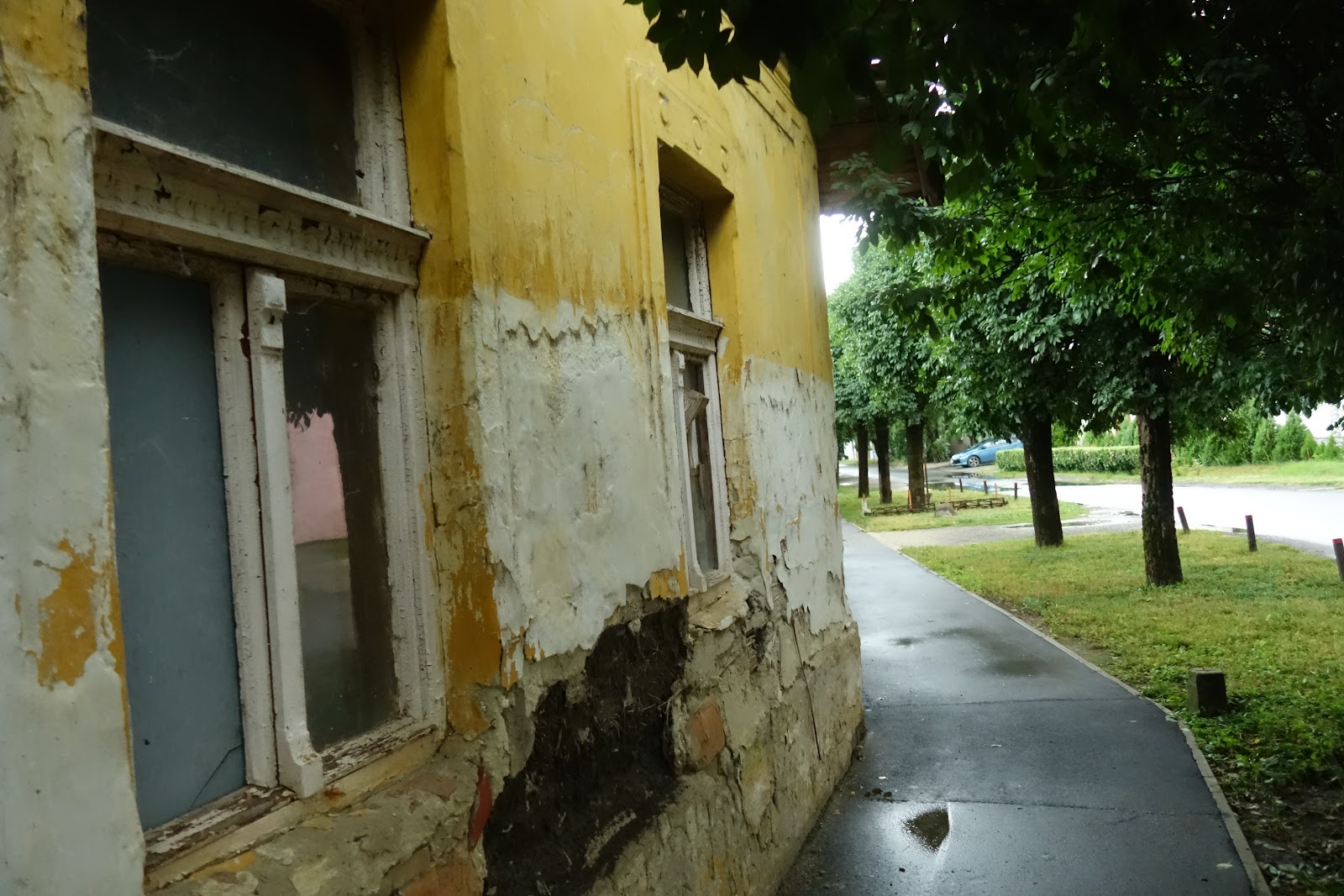













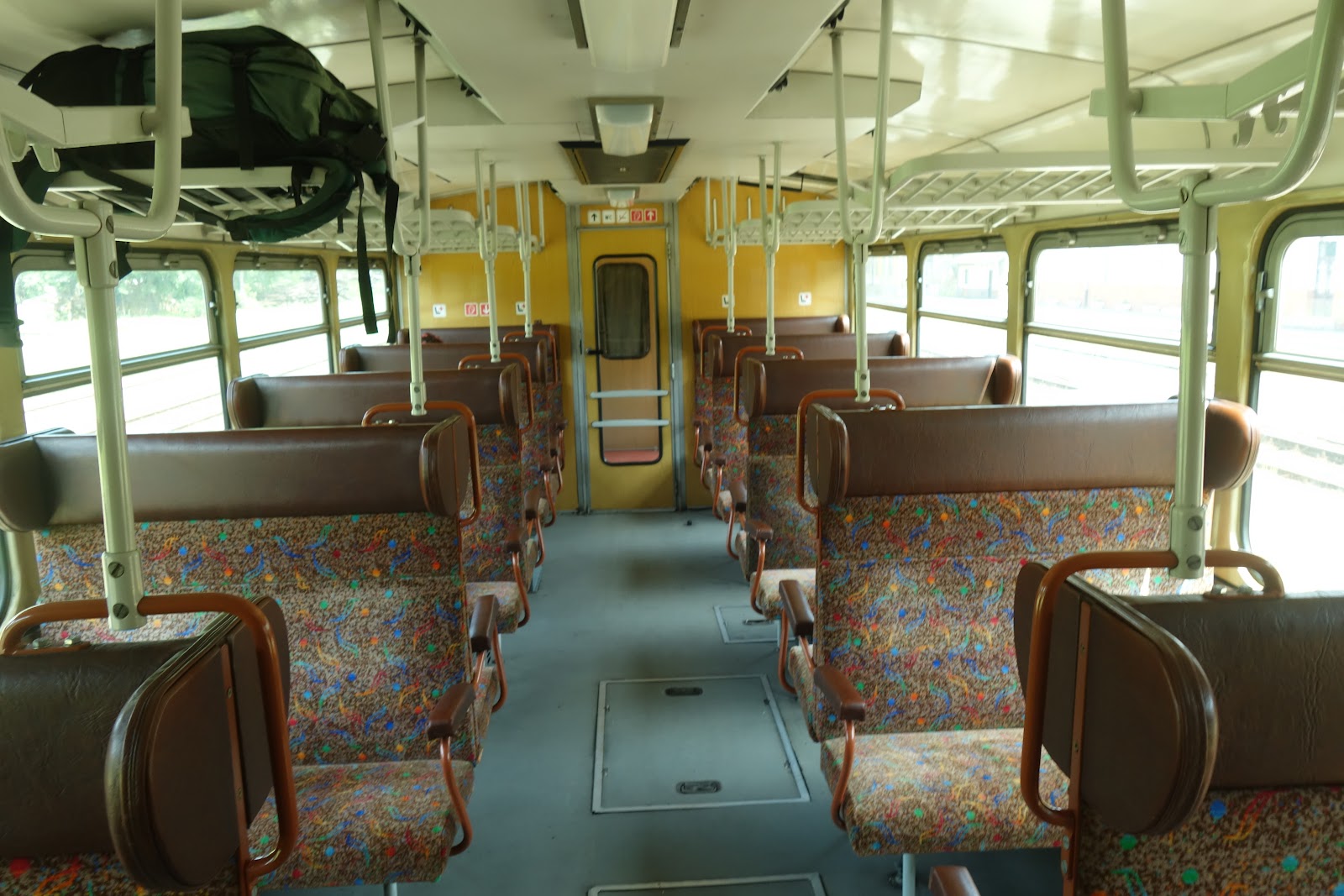




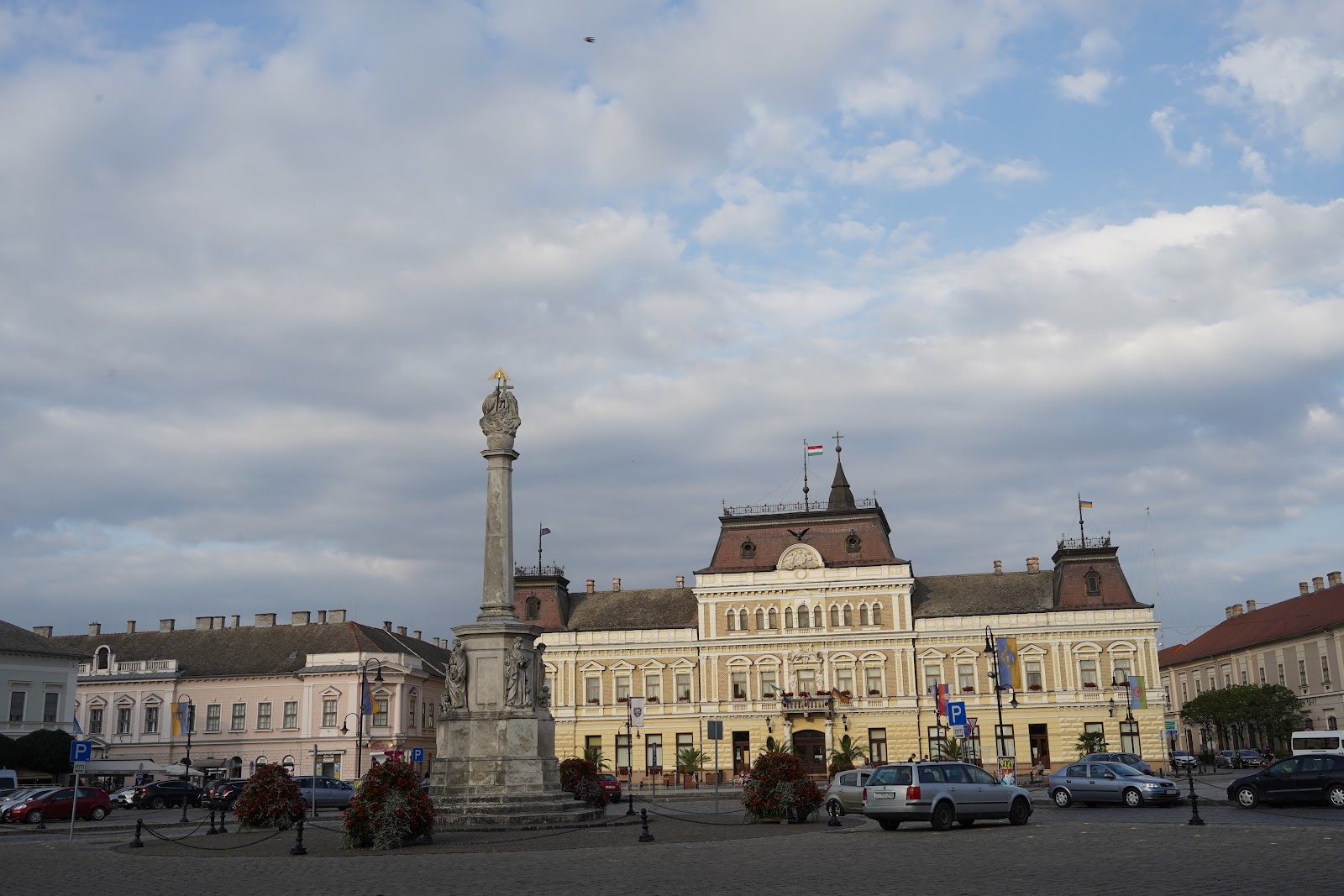















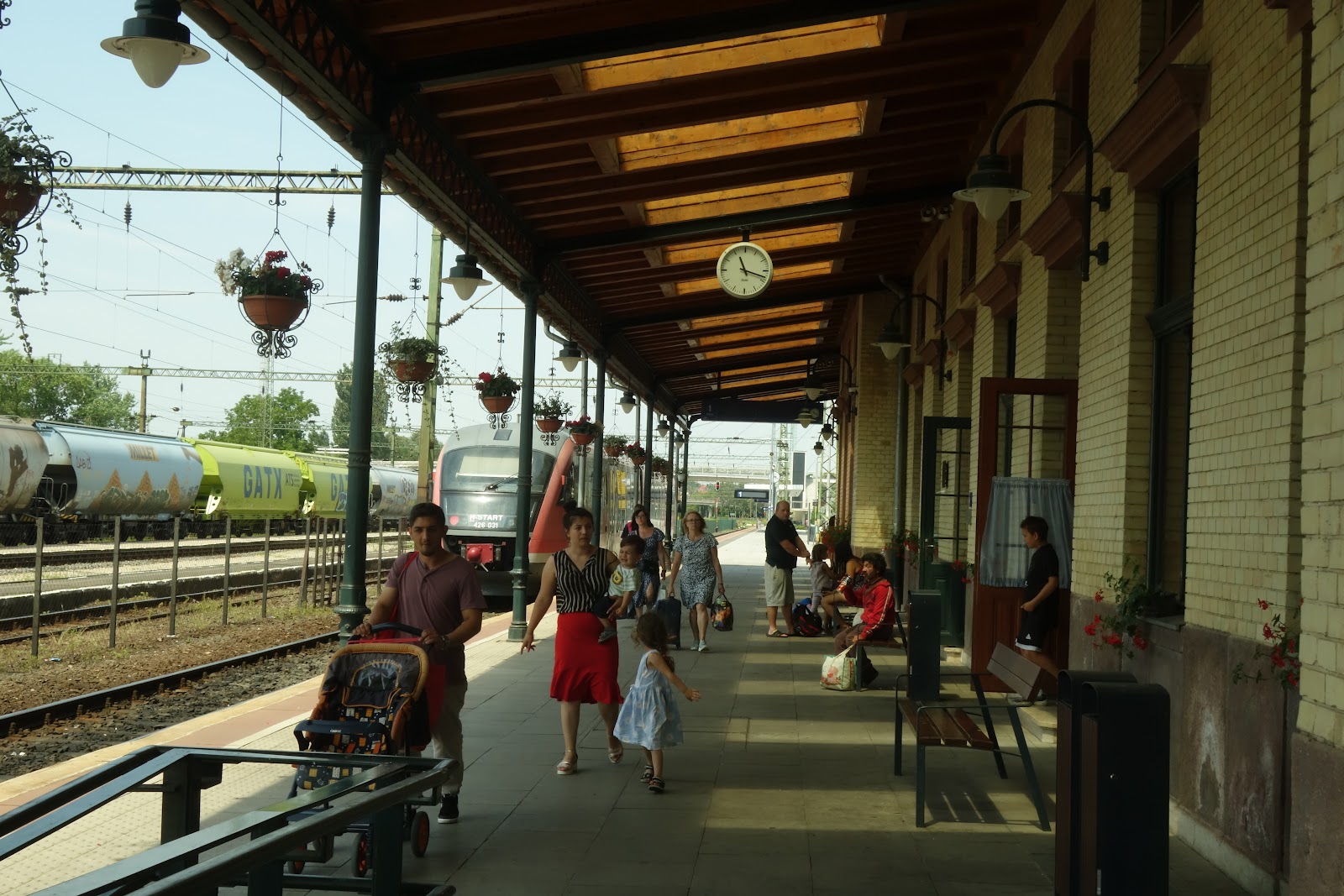







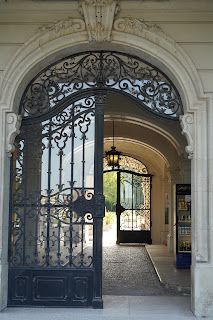

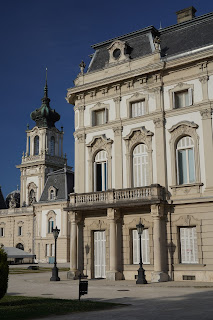





No comments:
Post a Comment